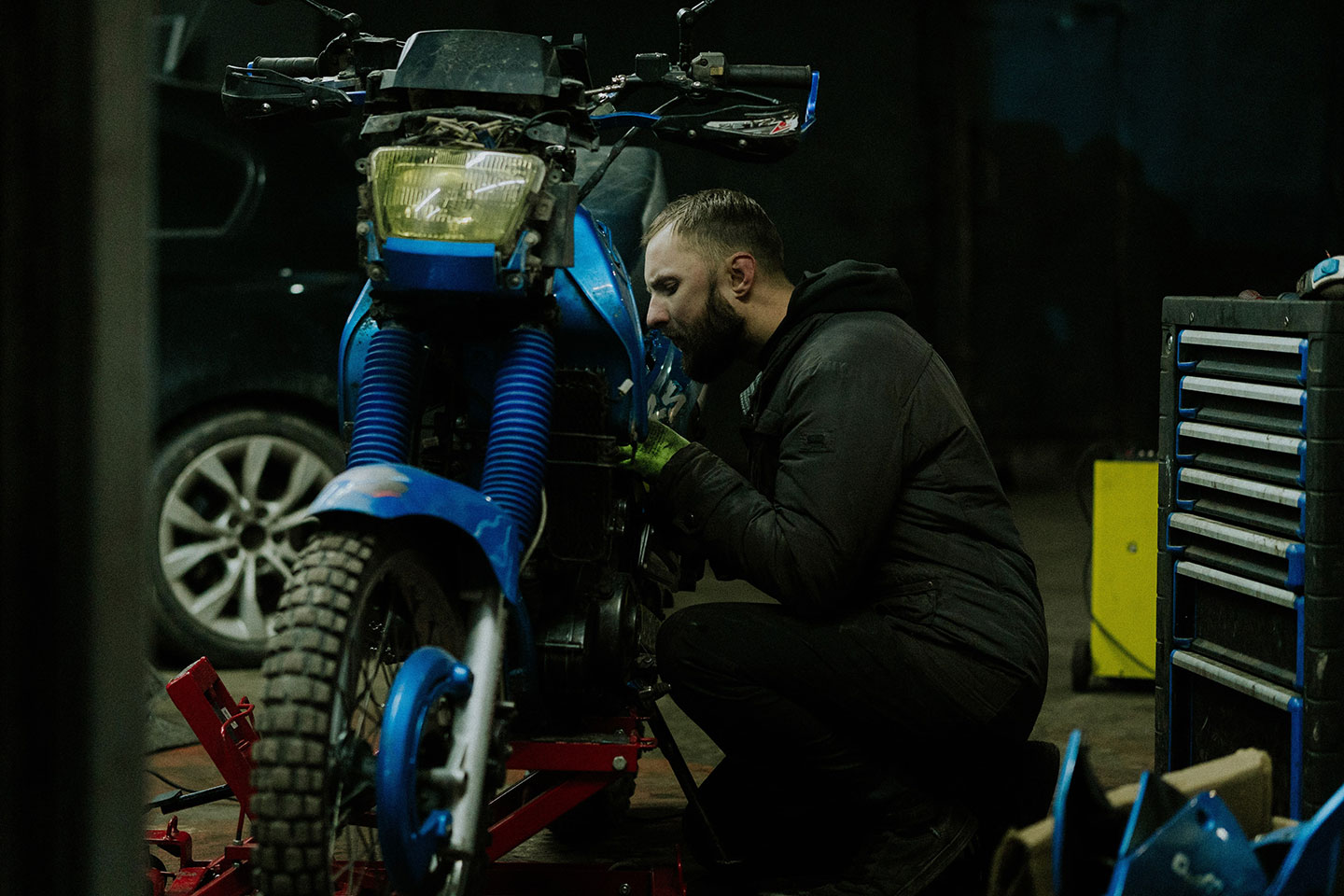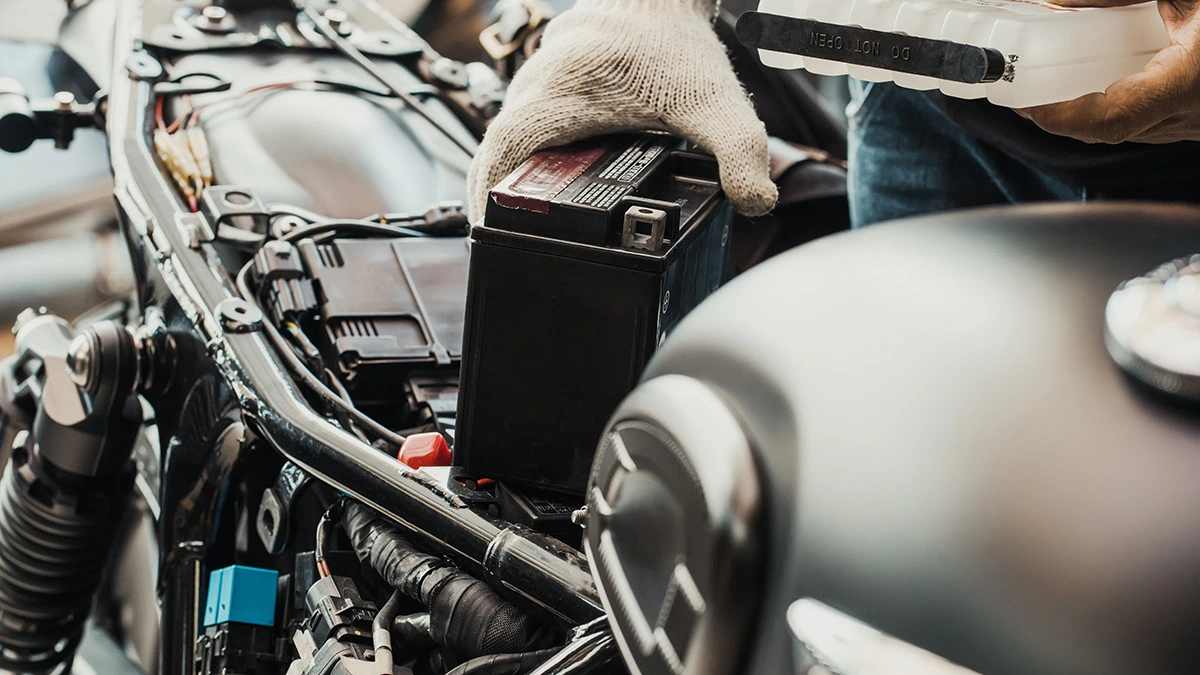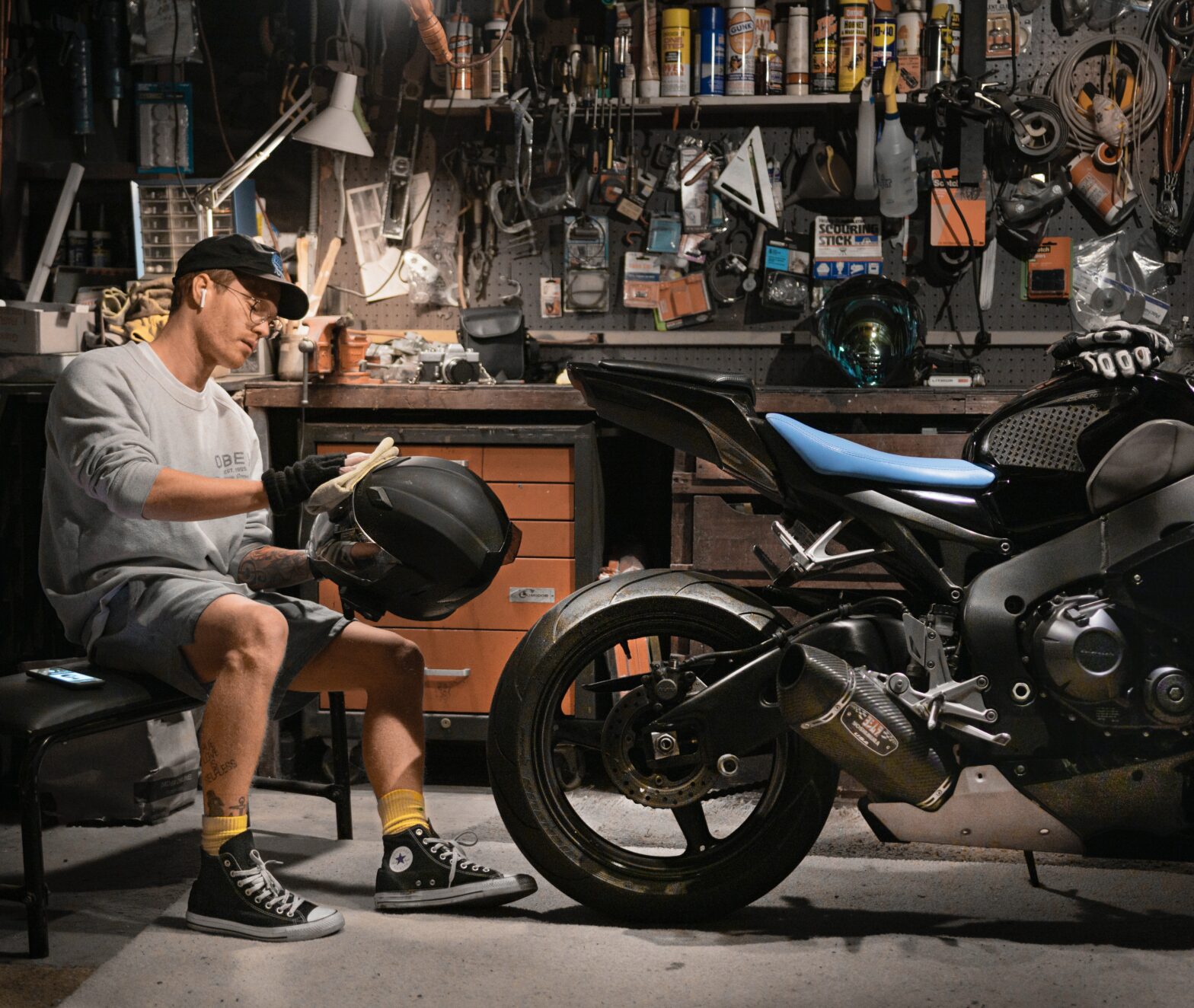Why is preparation necessary? In order not to worry about sudden breakdowns, repairs or bald tires when riding.
Correctly bring the motorcycle out of “winter hibernation”
Having removed the protective cover, probably the first thing you want to do is turn on the engine and listen to such a native roar of the motor. But doing this is absolutely not recommended!
It is very important to remove the battery before “preserving” the vehicle. If you did that, then well done! It remains only to check the voltage, charge the battery (if necessary) and put on the terminals, having them previously secured. If you packed your bike for the winter for the first time and did not know that the battery had to be removed, you may experience battery oxidation. If you can’t charge it, you will have to buy a new battery, and this is an additional cost.
Preparing the engine to start
The next step is to check the engine before the first start after the winter holiday. Before inserting the key into the ignition lock and giving the “Start” command, it is necessary to visually assess the condition of the motor vehicle.
What to study:
- Check the housing for leakage (visible drips will remain).
- Check the level of antifreeze in the tank and radiator. Add fluid if necessary.
- Check oil level and possible leaks. If necessary, add as needed.
- Gasoline is another important point that should not be missed. Experienced bikers, having ridden the season, pour a full tank of gasoline with a high-octane number and leave the motorcycle in this form for the winter. This minimizes the appearance of rust on the inner walls of the gas tank. Why is high-octane fuel necessary? During the period that the motorcycle is in hibernation, ordinary gasoline loses its primary functions. It is not uncommon for situations when, after winter, drained low octane gasoline did not catch fire even from an open flame.
It is important to analyze how you finished last season. Remember if there were problems with starting and traction, there were setbacks due to a bad spark and other troubles. If you are faced with at least one of the above defects, it’s time to think about how to renew the spark plug. The procedure is simple, it is important to observe the utmost accuracy, to have a “firm hand” and to observe maximum accuracy. Prepare the entire tool in advance, it should be at hand so as not to look for the right key at the last moment.

Changing spark plugs – useful tips
Often bikers are faced with the problem of thread tightening – an experienced driver knows how much trouble this can bring. You can not only break the thread, but even break the spark plug. It will take effort to cut a new threaded connection or carefully remove a broken piece.
Experienced experts advise buying parts with rubber bands or a magnet – in almost 100% of cases they will help to avoid damage to the ceramic layer in the spark plug. Add a ratchet to your tool kit or borrow from a neighbor in the garage – the tool will help to avoid overtightening the spark plug and stripping the threads.
An equally important tool is a feeler gauge used to measure the gap on a spark plug.
If you look into the service manual (a special book attached to each motorcycle, which describes all the technical details of the bike and the requirements for repair work), then you can easily find all the important information, including the clearance level.
Let’s turn the key – the first start of the engine!
We have already talked about the importance of checking the level of all source fluids before the initial run, but we will repeat, because this issue is incredibly important. Do not forget about the timely oil change – do not add new oil to the old one, completely drain the old stock and renew.
So, the fuel has been changed, all base fluids have been added to the desired level, the spark plugs have been changed. We install the charged battery in place, pull the “choke” (if it exists) to the maximum level and press “Start”.

If the engine does not respond as it should, cannot pick up turns, switch it off and wait a few minutes. Do not torture and drive the starter for more than 5-6 seconds. If it turned out to make a start, try turning off the choke and repeat all the manipulations again.
What if there is no reaction – no signs of life? What to do? Check that the petrol valve is in the “Open” position. It is also necessary to check the entire system, taking into account the moments when fuel enters the engine. If it’s not about fuel or a dead battery, go to plan “B” – start the motorcycle from the pusher.
Can’t start again? Take a look at the chat in CryptoMoto application – experienced bikers will surely help you with practical advice.
Checking additional features
The fluids are topped up, the battery is charged, the engine rumbles – everything is fine, let’s go check additional modules:
- Air filter. If you see small oil stains inside, the situation is under control. If greasy areas appear on the outside of the case and the ribs turn gray, it’s time to think about replacing the part with a new one.
- Tires. Did you lower the wheels before wintering the bike? If yes, then you are done and there should be no problems with tires. If for some reason you did not do this, carefully inspect the surface of the wheels for defects. To make this easier, fully inflate the wheels. Now leave the bike for a few hours and check the pressure. A simple manipulation will allow you to check the performance of the nipple.
- Chains and stars. If you notice bent teeth on the rear sprocket, then it is better to replace such a part – it is not safe to drive with malfunctions. The chainring needs to be checked too, even if you only see a few teeth. Chains come with seals and without. If you have fixed the loss of the seal, a replacement is necessary. If the chain is normal, check the tension and tighten if necessary.
Also be sure to check the brakes, turn indicators, stops and head light. Sound signals and multiple sensors also need to be checked – over the winter, the contacts could move away or oxidize, something may not work as expected.











